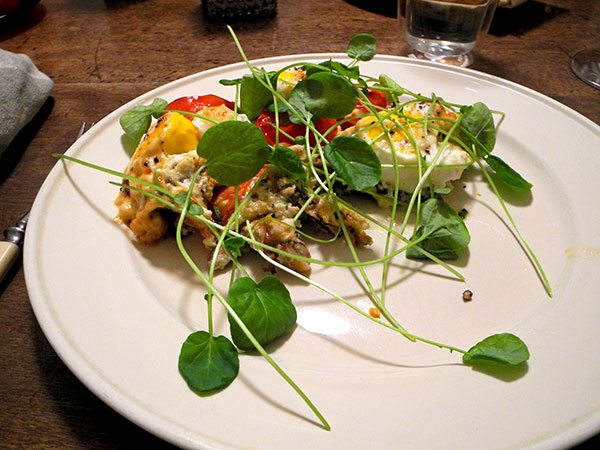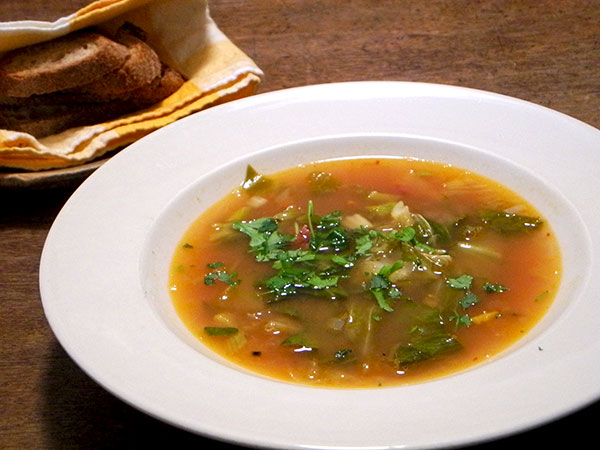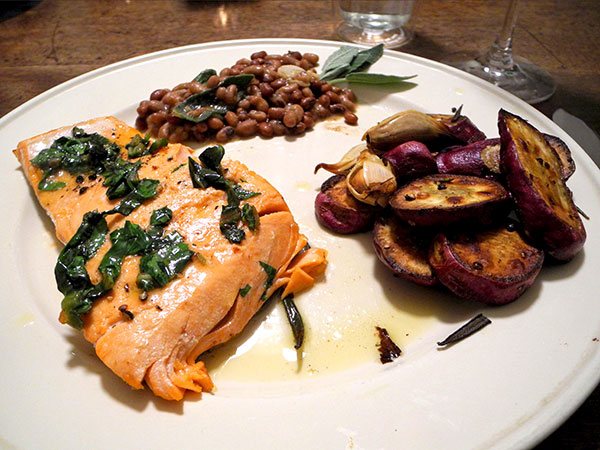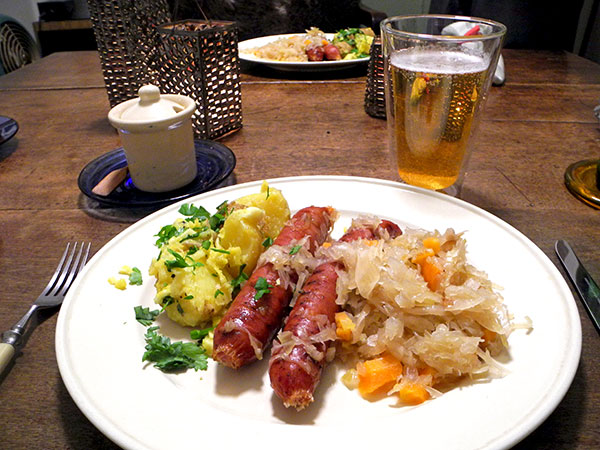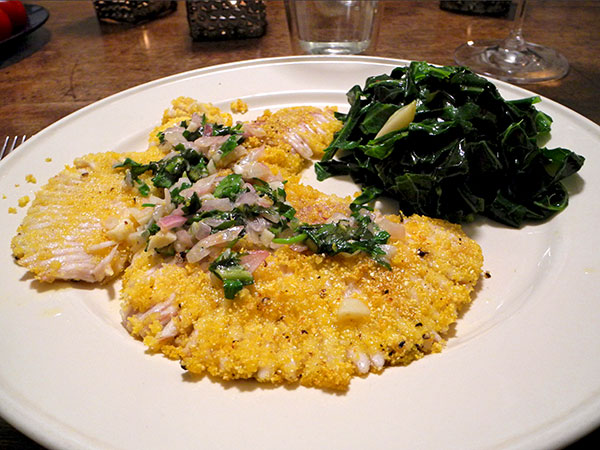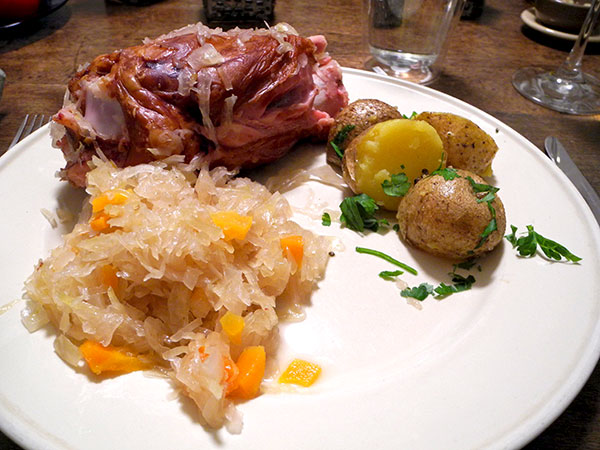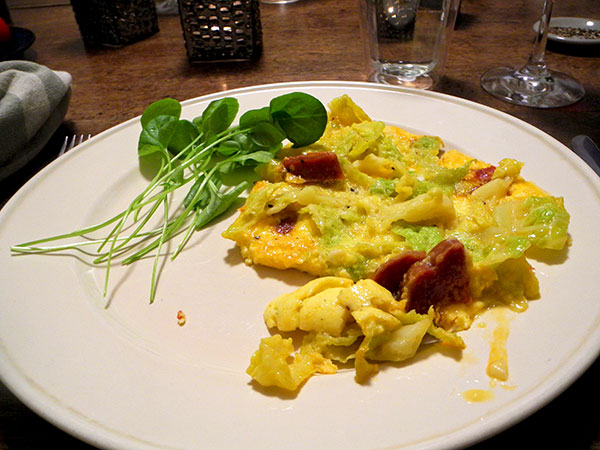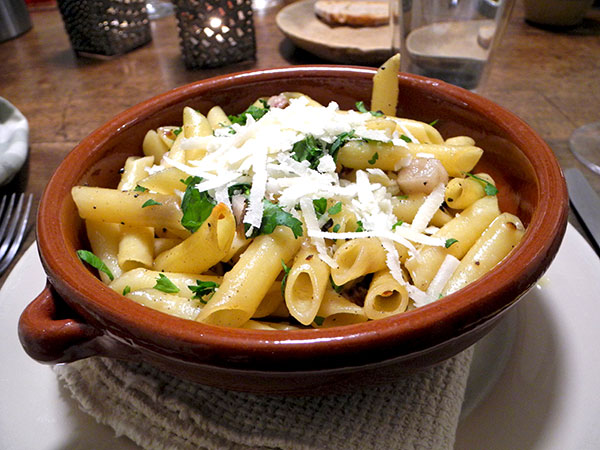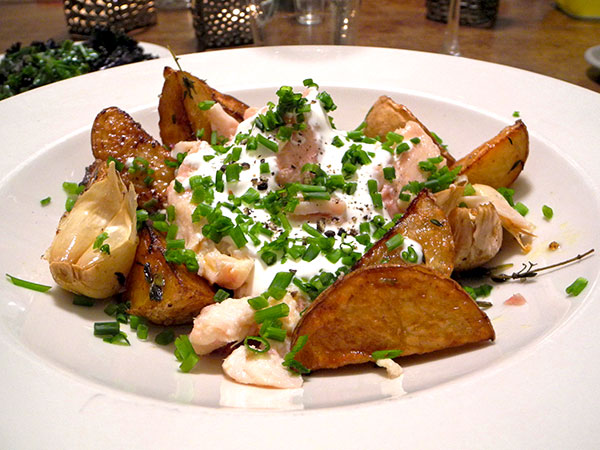I got a bit carried away last night with a recipe I had enjoyed twice before in more simple forms. The recipe that had started as ‘baked eggs with mushrooms, and Gruyère’ on New Years Day was delicious, and the slightly more elaborate, ‘baked eggs with mushrooms, Gruyère, scallions, and tomato’ with the addition of two eggs and some tomato, was different, but probably equally good. Last night I may have gone a bit too far, with ‘baked eggs with mushrooms, leeks, tomato, and cress, or maybe I just lost my balance, but the dish didn’t quite shine, and not only because the egg yolks ended up cooked through rather than just a little runny.
I think I had eventually missed the minimal point of the original, sensible recipe, and made it a bit top heavy, but the dish did make a reasonable, and colorful, picture. That may be the only excuse for this post.
- Shiitake mushrooms from John D. Maderna Farms, sautéed for a few minutes over medium high heat before the addition of garlic from Migliorelli Farm, minced, thyme from Manhattan Fruit Exchange, chopped, both heated for a minute or two and placed in a buttered ceramic baking dish, replaced in the pan by one leek from Lucky Dog Organic, sliced thinly and sautéed before also being placed in the baking dish, after which six eggs from Millport Dairy were cracked open on top, seasoned with salt and pepper, sprinkled with shredded cheese (Swiss Le Gruyère from Trader Joe’s), and dotted with halved ‘Cocktail Tomatoes’ from Maine, purchased at Whole Foods, the entire surface drizzled with a bit of heavy cream, and the dish baked in the oven for about 20 minutes, or until the whites were set and the yolks were (ideally) still barely runny, placed on plates and tossed with upland cress from Two Guys from Woodbridge
- the wine was a Poruguese red, Periquita Original 2011 Jose Maria de Fonseca Setúbal
